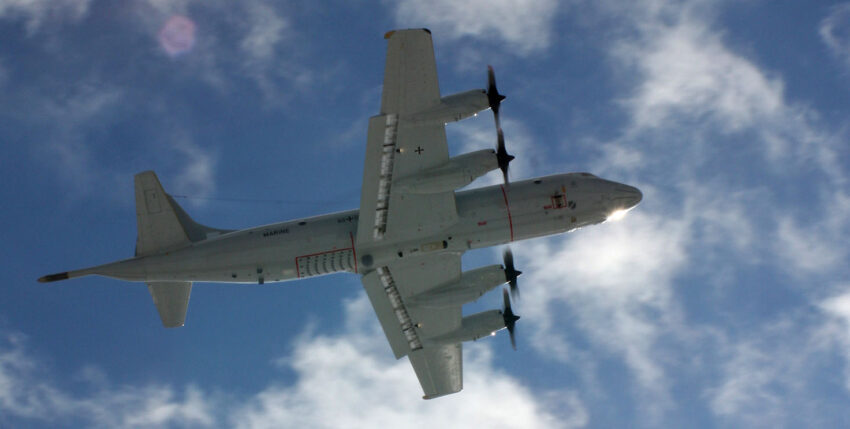Capability gaps must be closed soon
The naval aviators are currently in a comprehensive renewal and modernisation phase of their airborne naval warfare assets. In doing so, they are maintaining and strengthening the navy's indispensable ability to conduct naval warfare from the air. This applies in particular to the renewal of the helicopter fleet. However, with the planned decommissioning of its eight P-3C Orion maritime patrol aircraft by 2025, the naval aviators and thus the navy are threatened with a serious loss of capability in the areas of maritime reconnaissance, maritime surveillance and airborne submarine hunting. The navy must therefore avoid this loss and decide on a successor for the P-3C Orion as quickly as possible.
Helicopter fleet
The naval aviators are currently receiving new NH 90 NTH multi-purpose and transport helicopters. The first Sea Lion was already delivered in June 2020. Delivery of all 18 aircraft is scheduled for completion in 2022 and full operational readiness is expected in 2023. The Sea Lion replaces the Sea King Mk 41 transport helicopter, which was procured in the mid-1970s and is now obsolete. The Sea Lion's mission spectrum includes tactical transport tasks for up to 20 people and material, maritime surveillance, search and rescue (SAR), medical and other evacuations as well as boarding missions. The Sea Lion has an extensive sensor system with a 360-degree maritime surveillance radar, infrared and video cameras, laser range finders, an Eloka system for electronic reconnaissance and a console for processing sensor data and exchanging data with other ships and aircraft in the fleet. The helicopter can also be equipped with two heavy machine guns and decoy systems for operations in combat zones.
In addition to the Sea Lion, the naval aviators will receive 31 new multi-role Sea Tiger helicopters. These are due to replace the Sea Lynx Mk 88A helicopters, which have been in service as an integral part of frigates since the 1980s, at the end of 2025. Like its predecessor, the Sea Tiger is a combat helicopter for submarine hunting and engaging surface targets. It can therefore be equipped with a low-frequency diving sonar, sonar buoys and corresponding weapons such as torpedoes and guided missiles. It can also be used as a transport and rescue helicopter within a ship's convoy.
Do 228 LM oil separator
The two Dornier 228 LM oil reconnaissance aircraft will also be modernised by 2023. The aircraft have the Medusa mission system for data documentation and extensive sensor equipment with side-scan radar, line scanners for the IR and UV range, microwave radiometers, fluorescence lasers and various cameras. The mission system, the sensor equipment and the communication system will be completely overhauled and brought up to the latest state of the art and regulations. With its extensive sensor equipment, the aircraft is also suitable for operational reconnaissance and surveillance missions in small sea areas or coastal waters, for example in co-operation with the coast guard or in maritime Frontex operations. The naval aviators operate the oil reconnaissance aircraft on behalf of the Federal Ministry of Transport and the Central Command for Maritime Emergencies. Operational missions must therefore be agreed with these two authorities.
UAV Sea Falcon
The Navy had already planned to procure Unmanned Aerial Vehicles (UAVs) as an organic component of the corvettes when the Korvette 130 was introduced in 2008. In 2016, the Urgent Marine Unmanned Aircraft System (VorMUAS) project was activated to expand the corvettes' reconnaissance capabilities. In 2017, the Navy decided in favour of procuring the Skeldar V-200 UAV. The Sea Falcon has a range of 100 kilometres, a flight duration of five hours and a speed of 150 kilometres per hour. With a so-called deck finder on the landing deck of the corvette, the UAV takes off and lands independently. During maritime surveillance, the Sea Falcon sends high-resolution images to the corvette in real time. Testing and operational testing of the UAV on the corvette Braunschweig and training of the flying and technical personnel began at the end of 2020. The corvette will take part in the Unifil mission in the eastern Mediterranean in June 2021. The Sea Falcon will be tested under operational conditions. The Navy is planning to equip all corvettes and frigates with a UAV system in the medium term with the project Reconnaissance and Identification in Maritime Operations (AImEG).
P-3C Orion
In 2004, the navy took delivery of eight used P-3C Orion maritime patrol aircraft (MPA) from the Royal Netherlands Navy. The P-3C weapon system is indispensable for the navy as a maritime patrol aircraft, but above all as a submarine-hunting aircraft. The aircraft should actually be thoroughly modernised and repaired by 2023 in order to be able to operate until 2035. From then on, the planned Franco-German Maritime Airborne Weapon System (MAWS) is to be introduced as a maritime reconnaissance aircraft and submarine hunter. However, in 2020, the modernisation and maintenance measures for the eight aircraft were cancelled due to a complaint from the Federal Court of Auditors due to significant cost overruns and technical risks, and their decommissioning was brought forward by ten years from 2035 to 2025. The naval aviators are currently only operating with two operational aircraft. It is uncertain how long these aircraft will last.
This has created a serious capability gap in naval aviation for the period 2025 to 2035, which must be closed at all costs. The aim now is for the Federal Ministry of Defence to implement an interim solution for a market-available weapon system by 2025 that ensures the continuous availability of maritime reconnaissance and, above all, anti-submarine warfare capabilities in the navy. Market-available C-295 and RAS 72 MPAs have already been ruled out as an interim solution. France has offered four second-hand Bregruet Atlantic 2 MPAs, but these are not being considered due to obsolescence. In addition, the French aircraft are to be decommissioned anyway and replaced by the MAWS.
Attention is currently focussed on the possible procurement of P-8A Poseidon MPAs. The US Defence Security Cooperation Agency (DSCA) announced in March 2021 that the US State Department had approved a possible sale of five Poseidons worth 1.5 billion euros to Germany. The former inspector of the Navy, Vice Admiral Andreas Krause, has also spoken out in favour of the procurement of the Poseidon aircraft. With the Poeidon, the naval aviation received a new and operationally mature weapon system for naval warfare from the air, which is already in service with the US Navy, the Royal Navy and the navies of Norway, Australia, India, South Korea and New Zealand. The BMVg is quite open to the Poseidon procurement as an interim solution. However, the financing (1.5 billion euros) has not yet been secured or clarified. For the 2021 financial year, however, the BMVg only has budget funds totalling approx. 1.155 billion euros in Title 554 130 32 for the procurement of aircraft, missiles and numerous items of aeronautical equipment. In addition, the Poseidon procurement is a major project that co-currents with other major army and air force projects. It is therefore unlikely that a decision on the procurement of the Poseidon will be made this year.
Text: Dieter Stockfisch; Photo: Bundeswehr/PIZM










